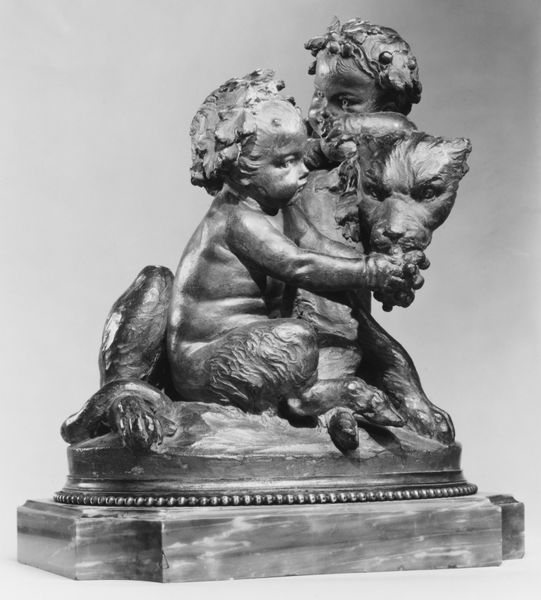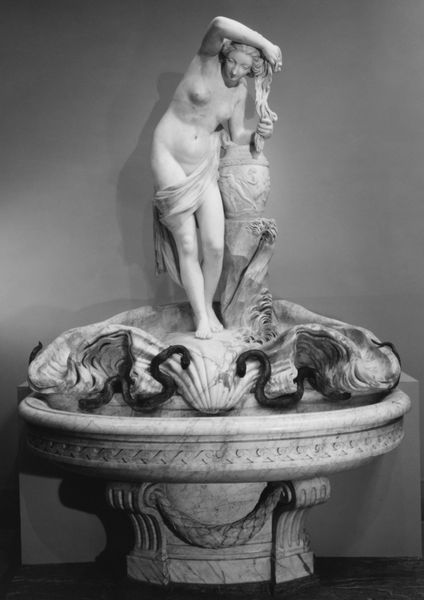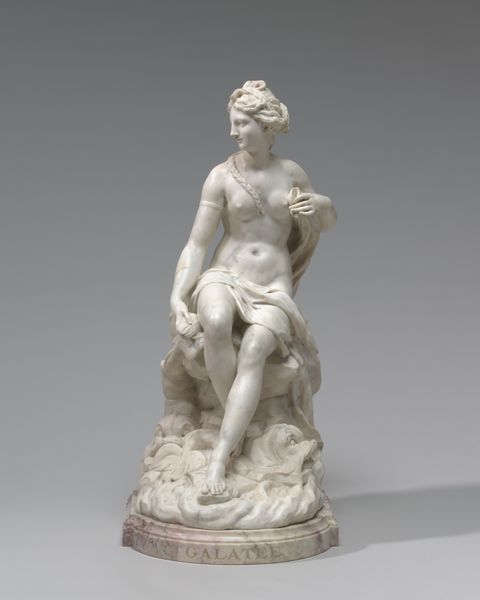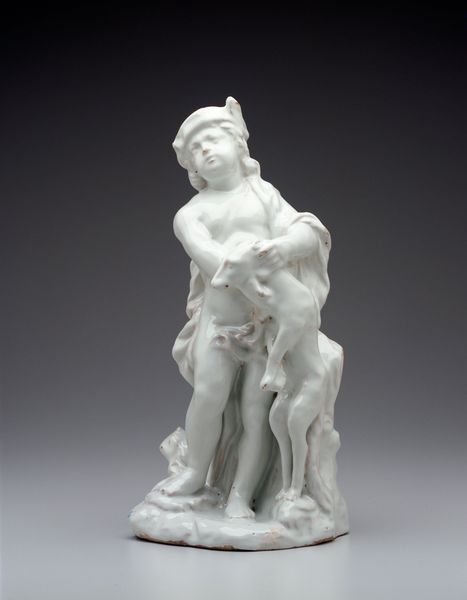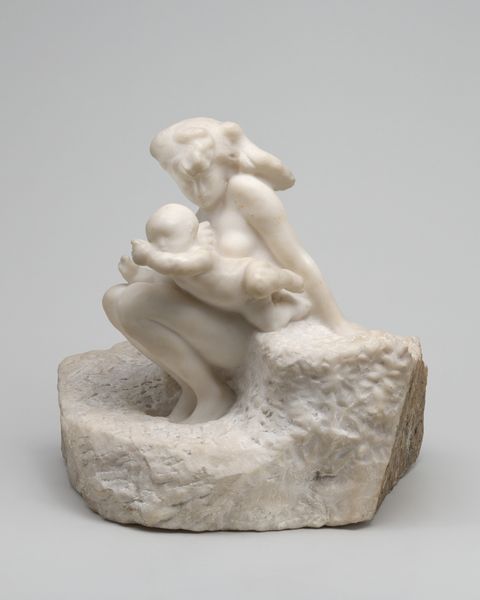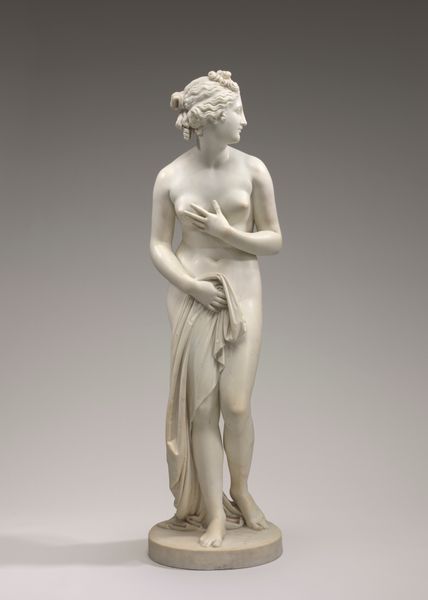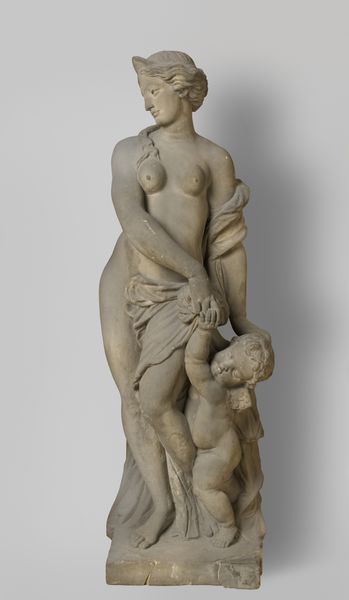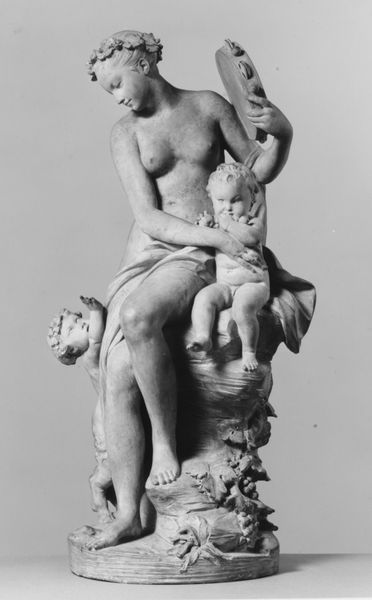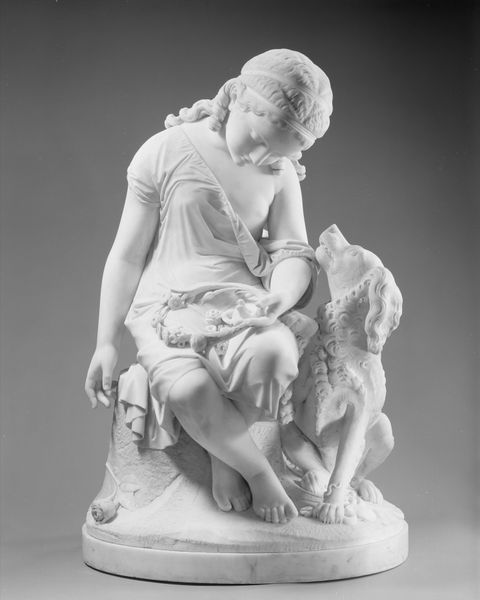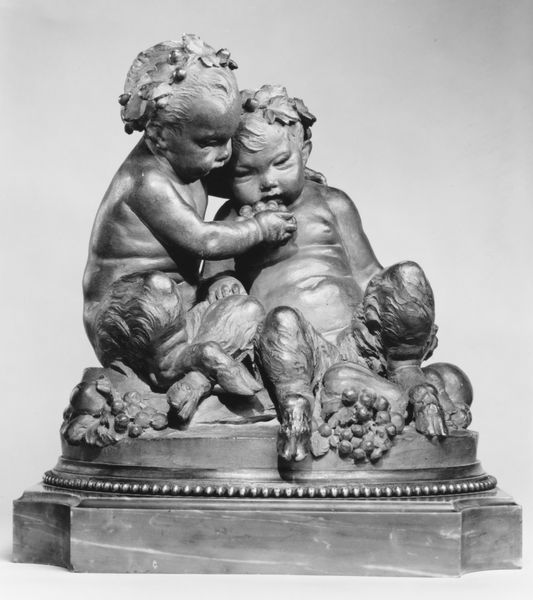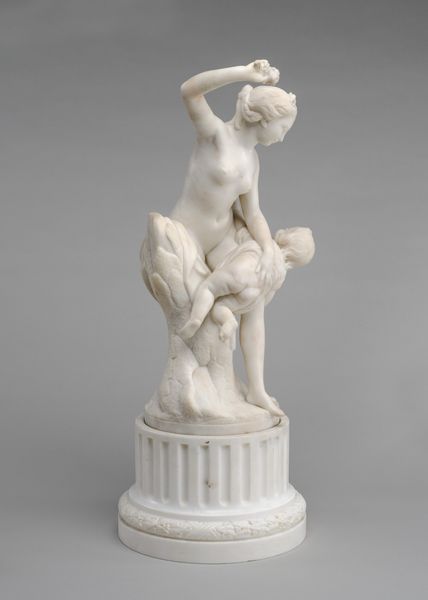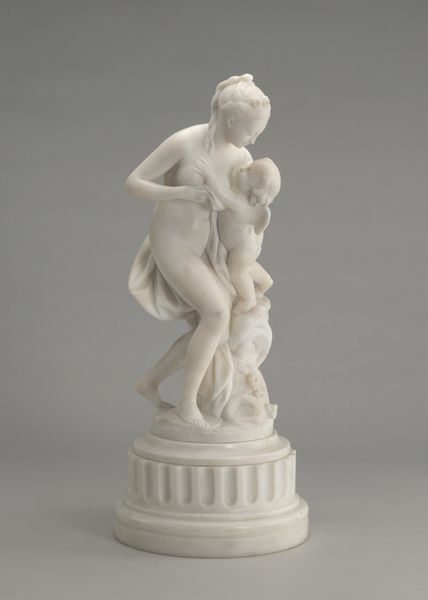
sculpture, marble
#
sculpture
#
figuration
#
form
#
female-nude
#
classicism
#
sculpture
#
academic-art
#
decorative-art
#
marble
#
nude
Dimensions: 22 1/2 × 11 1/2 in. (57.2 × 29.2 cm)
Copyright: Public Domain
Curator: This is Aimé-Jules Dalou’s “Nude Woman,” created in 1899, and currently residing at the Metropolitan Museum of Art. It's carved from marble, a traditional medium for such figurative work. Editor: She seems…uncomfortable. Not in the classical heroic nude sense at all. The way she's perched on that rock, arms crossed, looking away. It’s as if she’s been caught unaware, and it feels oddly modern despite the material. Curator: Precisely. Dalou was working against the idealized academic tradition, although he certainly was formally trained. We must consider the socio-political climate of France in the late 19th century, a period grappling with realism and a re-evaluation of classical forms. Editor: It's fascinating how the cold, hard marble softens under Dalou's hand. It almost makes me think about the labor involved – the sheer amount of physical effort needed to coax that form from stone. It seems her skin has a polished look! I wonder what techniques and tools were used? Curator: Research suggests he likely used a variety of chisels and rasps, reflecting the division of labor prevalent in sculpture studios at the time, as various assistants would complete specific tasks. Moreover, it raises questions about the cultural construction of the female nude in art and its reception. What meanings and power dynamics are being negotiated when we publicly display her in this way? Editor: I find her averted gaze particularly interesting. It resists the objectification so common in nude studies. You get the impression that it makes her feel more like an individual, withdrawn and pensive. How did institutions exhibit work of the female figure around that time, what parameters were around these shows? Curator: Public display certainly adds layers to our understanding. Salons and exhibitions then were very much battlegrounds of aesthetic and social ideals. The nude figure acted as a test of conventional limits and evolving definitions of beauty and taste. Editor: Considering this sculpture's presence within the Met today, framed within the legacy of decorative art, forces us to consider the canon-making process. How does her narrative shift as museums make room for a broader range of works? Curator: Indeed, placing it in conversation with a wider spectrum of sculpture helps unpack the nuances of artistic expression and cultural influence during that time. It encourages viewers to question whose bodies, stories, and techniques have historically been celebrated. Editor: Reflecting on it now, she's really rather compelling, far removed from the detached perfection one associates with marble figures. Curator: And I appreciate how this work makes us rethink academic norms and raises necessary dialogues regarding gendered representations in sculpture.
Comments
No comments
Be the first to comment and join the conversation on the ultimate creative platform.
